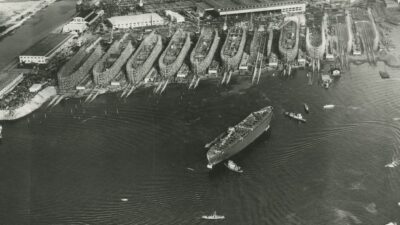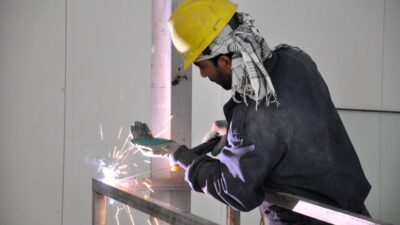Certain groups of workers are at high risk of asbestos exposure due to the surroundings or envinronment around which they work.
In the United States, the peak period when asbestos was very popular started from the World War II to the early 1980s.
Workers in the construction, shipbuilding, railworks, and the steel manufacturing industry were at great risk of asbestos exposure as they inhaled the fibers that dissipitated into the air due to disturbance.
This puts steel mill workers at great risk of asbestos exposure as well, especially those steel mills built before the 1980s.
Steel mills are work areas where laborers are required to work around extremely hot areas that involve working with very hot substances (liquids, solids), hot locations or hot machinery.
Because asbestos is resistant to heat and energy, it was widely used in the steel mills industries to prevent the chance of fires erupting from factories.
Any person who was in the factory during working hours is at risk of asbestos exposure, even if their work duties did not involve laboring.
What is the specific purpose of using Asbestos in steel mills? Asbestos is extremely fire & heat resistant, has high tensile strength and is also resistant to physical & chemical breakdown of substances.
Asbestos was used for insulating concretes, metals, plastics & other materials as well as make them fire-proof.
Because the metals or concretes used in steel mills were very hot, asbestos was used to make them resistant to heat and decrease the chance of fires breaking out.
Asbestos was also used in machinery that had moving parts and were subject to heat & friction. Asbestos was added to cement, insulation products and other construction materials to reduce the hazards of fire and limit the spread if one does occur.
Another risk factor for steel mill workers was the fact that asbestos was woven into the safety or protective clothes that were being produced. Examples of such safety gear included face masks, coveralls, aprons and gloves.
While handling the clothing; asbestos fibers could easily dissipitate into the air if the fabric was torn or ripped, making the work of steel mill workers even more dangerous.
Furthermore, asbestos containing products were used in insulating blast furnaces, steam pipes, boilers, and other tools that steel mill workers used such as steel chains or coils as well as end mills, reamers or steel cutting tools.
Case Study
The following case was believed to be the largest asbestos verdict in a California court in history because a San Francisco jury awarded $33,700,000 to a former navy electrician and his wife, Alfred & Stephanie Todak.
Mr. Todak was diagnosed with mesothelioma lung cancer in March 2001, at the age of 60. Mr. Todak is undergoing lung cancer clinical trials at the University of Chicago mesothelioma clinic.
The defendant of the lawsuit was Foster Wheeler Corporation, a company that designs, manufacturers and supplies marine boilers with asbestos-containing materials such as refractory block insulation, roving material, and gaskets.
The San Francisco jury awarded the case to Mr. Todak because Foster Wheeler’s asbestos–containing type–D marine boilers were not safe under California Consumer Safety statutes.
The design of these marine boilers pose a danger to workers around it, as well as to the consumers that use it. The jury also found Foster Wheeler was negligent in its design, manufacture, and supply of its asbestos–containing boilers.
Mr. Todak’s work history with Foster Wheeler included working at the Lockheed Shipbuilding and Construction Company in Seattle, Washington, from 1967 through 1972 and helping in the construction of 7 US Navy “Landing Personnel Docks”, or LPD attack vessels.
For each LPD attack vessel, 2 type–D marine boilers were installed and it was Mr. Todak’s job to install these correctly. Mr. Todak also worked as the lead electrician in LPD–9 U.S.S. DENVER and LPD–10 U.S.S. JUNEAU ships which included the installation and construction of the Foster Wheeler marine boilers.
dr. Thahirah













